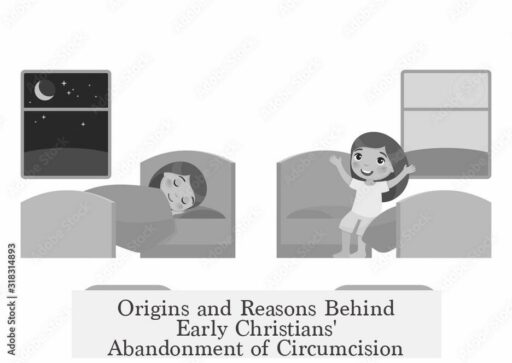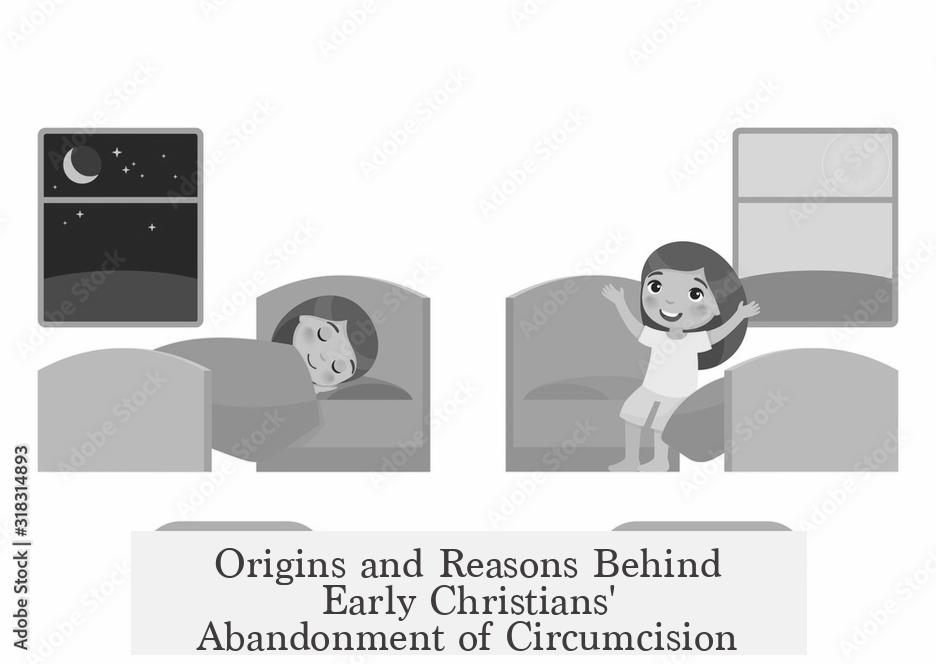Early Christians stopped the act of circumcision for Gentile converts around 48–50 A.D., as decided at the First Council of Jerusalem. This council, recorded in Acts 15 and referenced by Paul in Galatians 2, marked a key turning point by declaring circumcision unnecessary for salvation and inclusion in the New Covenant.
The earliest followers of Jesus were Jewish Christians who continued practicing circumcision as a sign of their Jewish identity. At this stage, Christianity was largely seen as a Jewish sect rather than a distinct religion. However, as Gentiles began joining the faith, the requirement of circumcision became controversial. The shift was not abrupt but emerged from intense debate on whether non-Jews must fully adopt Mosaic Law, including circumcision, to become Christians.
The Apostle Paul plays a central role in this transition. Known as the “Apostle to the Gentiles,” Paul argued strongly that salvation comes through faith in Christ rather than adherence to the Jewish Law, including circumcision. His letters, especially Galatians, emphasize that physical circumcision is no longer required because the new salvation covenant through Jesus supersedes the old Mosaic covenant.
Paul did not condemn Jewish Christians who maintained circumcision or other Mosaic customs such as dietary laws. Instead, he regarded these practices as redundant for salvation. This theological shift framed the crucifixion and resurrection of Christ as the “new covenant.” While the original covenant with Abraham demanded circumcision as a sign of God’s promise and Jewish identity, the new covenant represents God’s promise of eternal life to all people through faith in Christ.
Pragmatic and cultural reasons also influenced the abandonment of circumcision for Gentile converts. The Greco-Roman world viewed circumcision negatively. Both ancient Greeks and Romans favored the natural foreskin, and circumcision was regarded as strange and even barbaric. Public life included activities like exercising nude in gymnasiums and visiting baths, environments where circumcision was conspicuous and unwelcome. Maintaining Jewish customs risked alienating potential converts and provoking hostility from pagan authorities.
The Council of Jerusalem answered these concerns by exempting Gentiles from circumcision and most Mosaic laws. This decision helped Christianity spread more easily among non-Jewish populations across the Roman Empire. The Apostolic Decree that followed focused on prohibiting idolatry, blood consumption, and sexual immorality but ruled out circumcision as mandatory for Gentiles.
Despite this shift, circumcision continued among Jewish Christians. The early Church distinguished between Jewish followers, who retained their cultural and religious identity, and Gentile converts, who were not bound by these customs. The sacrament of baptism grew in importance, gradually replacing circumcision as the physical symbol of the faith covenant in Christian practice.
Further biblical support for easing Jewish ceremonial laws comes from Peter’s vision described in Acts 10, where he is shown that dietary restrictions no longer apply universally. Such episodes underline early Christianity’s move toward inclusivity and the de-emphasizing of Jewish ceremonial obligations for Gentile converts.
Paul’s pragmatic approach reflects an awareness of the cultural environment and the practical necessities of religious expansion. Requiring circumcision would have been a high barrier that limited the recruitment of Gentiles to the faith. By declaring faith alone as sufficient for salvation, early Christian leaders ensured more accessible entry into the Christian community.
Christianity’s adaptation to the diverse Greco-Roman cultural context also involved syncretism, blending Jewish traditions with pagan ideas. This process led to a religion distinct from its Jewish roots and capable of appealing broadly across the Roman world. The shift away from circumcision is thus part of a larger transformation involving theology, culture, and identity.
| Aspect | Details |
|---|---|
| When | Circa 48-50 A.D., at the First Council of Jerusalem |
| Why | To make salvation accessible to Gentiles without requiring Mosaic Law obedience |
| Theological Reason | Faith in Christ replaces the old covenant; circumcision rendered redundant |
| Cultural Reason | Greco-Roman hostility toward circumcision and practicality for broader evangelism |
| Continued Practice | Jewish Christians still circumcised; Gentiles exempt |
| Symbolic Replacement | Baptism replaces circumcision as sign of covenant |
- The First Council of Jerusalem (c. 50 A.D.) made circumcision optional for Gentile converts.
- Paul argued salvation comes through faith, not Mosaic Law adherence.
- Cultural opposition in Greco-Roman society made circumcision impractical for Gentiles.
- Jewish Christians continued circumcision, maintaining Jewish identity.
- Baptism emerged as the new covenant’s symbolic rite.




